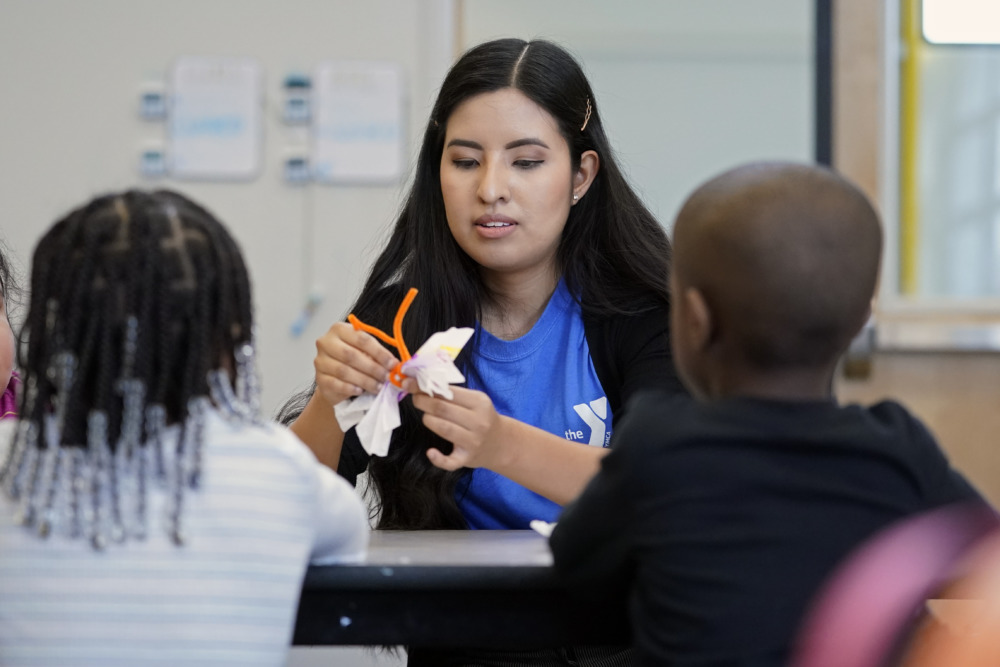Afterschool advocates welcomed a $30 million federal spending boost for out-of-school time programs they say will benefit 30,000 additional children a year, even as they warned the increase falls far short of what is needed.
“The final budget is not nearly enough to meet the demand for quality afterschool and summer learning programs – especially at this time when the costs associated with offering high quality afterschool and summer opportunities have risen,” Jodi Grant, executive director of the Afterschool Alliance, said in a statement.
 The spending deal for fiscal year 2022 was reached after several months of political loggerheads on Capitol Hill, and includes the increase to the nation’s flagship afterschool funding source, the Nita M. Lowey 21st Century Community Learning Centers, bringing the total annual amount to a record $1.289 billion.
The spending deal for fiscal year 2022 was reached after several months of political loggerheads on Capitol Hill, and includes the increase to the nation’s flagship afterschool funding source, the Nita M. Lowey 21st Century Community Learning Centers, bringing the total annual amount to a record $1.289 billion.
The additional money — as well as billions in temporary pandemic relief funding — is aimed at tackling the growing demand for afterschool programming, which has skyrocketed in the wake of the pandemic.
But the increase in demand has coincided with a labor shortage, inflation and supply chain problems that have exacerbated existing challenges. Meanwhile, educators, parents and lawmakers say they are relying on afterschool as a core strategy for helping students get back on track academically, socially and emotionally.
“It’s about investing in high quality afterschool — money that’s well spent,” said Rep. Rosa DeLauro, Democrat from Connecticut and the chair of the House Appropriations Committee.
“It pays huge social and economic dividends,” she added.
The Afterschool Alliance estimates some 24 million kids before the pandemic lacked access to afterschool programs, which are associated with improved academic and social outcomes.
Erik Peterson, senior vice president of policy for the alliance, said the children who are negatively impacted the most are low-income, Black or Latinx.
“Middle and upper income families spend five to six times more on extracurriculars or other activities, like ballet lessons and piano, for their children than low income parents do,” Peterson said. “More federal funding for afterschool will help to eliminate some of those disparities.”
On top of the equity gap, schools and afterschool organizations nationwide are finding themselves in a bit of a bind, having over-extended with new and expanded programs paid for with temporary pandemic relief funding or one-time surpluses from when schools were closed or operating virtually, said Peterson.
Once that funding dries up, it’s unclear how schools and community-based organizations will continue to sustain expanded afterschool programming.
“There was a need for these programs before the pandemic,” Peterson said. “There will be a need after the funding goes away.”
That’s why, for the fiscal year 2023, the Afterschool Alliance will be pushing Congress to increase funding by an additional $500 million, Peterson said.
“It’s a good size bump to reflect the tremendous need out there,” he said.
A $500 million “bump” will likely be a hard sell — the Biden administration released its proposed 2023 budget this week with an increase of $20 million for afterschool programming.
DeLauro noted that afterschool programming has bipartisan support, but acknowledged that advocates would like to see more.
“We worked very hard to get the appropriations bill across the finish line,” DeLauro said.
The 21st Century Community Learning Centers was first established in 1994 and has evolved over the decades to focus on providing out-of-school enrichment programs to low-income children. The money is distributed to states and then handed down to schools and community organizations, which have to apply in a highly competitive grant process.
The $30 million increase, which is part of annual recalculation by Congress that typically results in a raise, was expected to be higher — upwards of $100 million — based on an earlier budget proposal, and was supposed to be approved last fall. General partisan clashes combined with a pandemic then a war in Ukraine, Peterson suggested, are all likely culprits for its delay and decrease.
The lesser amount didn’t shock Teresa Dothard-Campbell, who oversees afterschool programs at Glenview Middle School in Illinois, although she said she was “really hoping it was going to be more.”
In response to the pandemic, Glenview Middle School expanded afterschool clubs and programs, adding a Latinx club, art club, chefs club, chess club and dissection club. But the robust afterschool offerings, while great for students, inflated the afterschool programming budget from $135,000 a year to roughly $225,000, said Dothard-Campbell.
Now the school has to figure out how the added programming can be sustained once the funds dry up. Dothard-Campbell said she hopes the increase in 21st Century Community Learning Centers will trickle down to her school’s programs, but she isn’t relying on it.
“It is very concerning,” she said. “How do we continue being able to offer this quality of afterschool programming next year, and in the years to come?”
Her skepticism was echoed by Ray Funnye, director of the Village Group, an afterschool program in South Carolina that has struggled to secure federal funding.
Funnye said the grant process for 21st Century Community Learning Centers funding is so competitive, he questioned whether he will land enough to make a real difference — or any at all.
“It should mean something, but it doesn’t,” Funnye said of the budget increase.
Instead of concerning himself with Congressional tussles over funding, Funnye said he’s focused on making good grant applications and getting young people ready for life after high school.
“With additional dollars, we could do additional things for young people,” Funnye said. “It is as simple as that.”






























